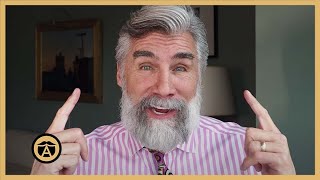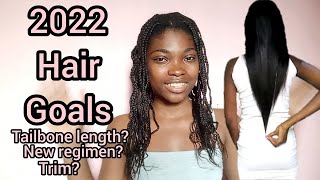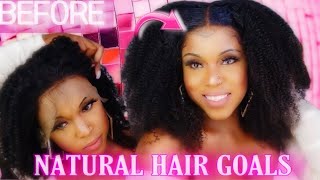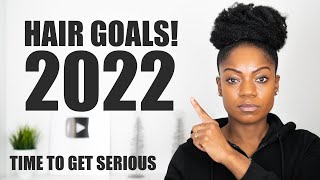An Ultra Protective Hair Regimen For The Girl Who Does Not Like Weaves Or Braids
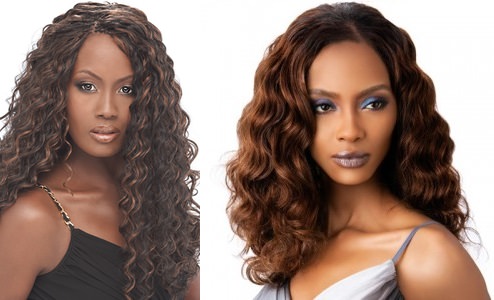 I put my first weave* in when I was transitioning to natural back in 2008. The hair was long, not quite waist length but long enough where it felt slightly uncomfortable. I remember when I was thinking about getting the install, I was so excited because it was my first time and the thought of not touching my hair for a whole month in the name of protective styling was equally as gratifying.
I put my first weave* in when I was transitioning to natural back in 2008. The hair was long, not quite waist length but long enough where it felt slightly uncomfortable. I remember when I was thinking about getting the install, I was so excited because it was my first time and the thought of not touching my hair for a whole month in the name of protective styling was equally as gratifying.
I had the install done on a Thursday after work but by Saturday evening I was back at the salon begging my stylist to make time to remove it. There was nothing wrong with the hair itself, I’m sure the install was perfect but I just couldn’t get past the fact that it felt like I had a cat permanently afixed to my head. The fact that I couldn’t touch my scalp caused some kind of weird anxiety that I don’t speak about often! Needless to say my stylist finally removed the hair and I went home a happy girl vowing never to put myself through that torture again.
There are many women out there who use weaves* as their chosen form of protective styling with absolutely no issues and have been very successful at keeping there own hair healthy and growing. However if you are like me and you just cant get down with a weave* or braids, then figuring out a regimen of protective styling that will keep your hair healthy and retaining length is your number one priority. Here is a simple protective styling regimen you can use to meet your hair goals while side stepping weaves* or braids.
Wash
Wash day is one the most important days of any regimen because it sets the foundation for moisture and strand health as you move through the motions of your week. On wash day, the first thing you have to decide is what your hair needs, does it need protein, moisture or both. Once you determine what it is then its time to find the products you need and start the process.
It is recommended that you choose a sulfate free shampoo* to cleanse your hair if you are not clarifying your hair that week or if you have other methods you can use to clarify then go ahead and use those.
Deep Condition
Deep conditioning is a great way to certify that your wash day has long lasting effects through out the week. Choose the best product that has moisturizing properties or something that is has protein depending on what your hair needs. Just know that your hair needs moisture if its extra ordinarily dry and it needs protein if it feels weak and appears limp and fragile. Use heat or steam whenever possible to deep condition your hair, this ensures that the cuticles are lifted and your product makes more of an impact on your hair.
 Deep conditioning* can also be done prior to shampoo on ‘dirty’ hair. If you prefer to do your deep conditioning* before you shampoo otherwise known as a pre poo then go for it, as a matter of fact if you are a DIY kind of a girl you can use a variety of ingredients that are meant to be washed out and geared towards the same goals of protein and moisture.
Deep conditioning* can also be done prior to shampoo on ‘dirty’ hair. If you prefer to do your deep conditioning* before you shampoo otherwise known as a pre poo then go for it, as a matter of fact if you are a DIY kind of a girl you can use a variety of ingredients that are meant to be washed out and geared towards the same goals of protein and moisture.
Detangling, Moisturizing And Sealing
One of the things that is understood but equally as important as conditioning and cleansing is detangling, moisturizing and sealing your hair. It is important that you detangle your hair in sections and set it in a manner that will keep your hair in a detangled state.
In other words, if you are natural, you need to keep your hair stretched. Most women detangle there hair in sections, apply a leave in conditioner*, seal with an oil or hair butter and twist or braid each section which keeps the hair separated and stretched. If you are relaxed, moisturizing and sealing alone will suffice.
Styling
Now that your wash routine is over, your next decision will be on protective styling. Protective styles are varied and your choices are many but to simplify things, you are going to have to depend very much on styles that keep your ends tucked in and away from your ardent attentions. Buns fit that bill quite nicely.
If you are natural, you might choose to retwist your hair neatly and leave the twists in as your protective style until the following wash day but if you don’t want to do that, then let your hair set in the twists overnight and release them for a curly look the following day. If you are relaxed then after your wash, apply your leave ins and air dry or roller set your hair depending on your preference.
On day one wear your hair down, wild and free but from day two until the next wash day, your hair will remain tucked away in a bun.
Here’s the time line:
Wash & DC > Curly set/Air Dry > Hair Worn Down On Day 1 > Hair In Bun Day 2 – Day 6 > Wash & DC
Allowing your hair that one day free of constraint mixes things up and helps tremendously with style boredom. It also gives your hair a break. Even protective styling can be stressful on your hair if done for long periods of time. Other styling options include a simple french roll, a single french braid or stylish updo, whichever one you choose just make sure that your ends are tucked away.
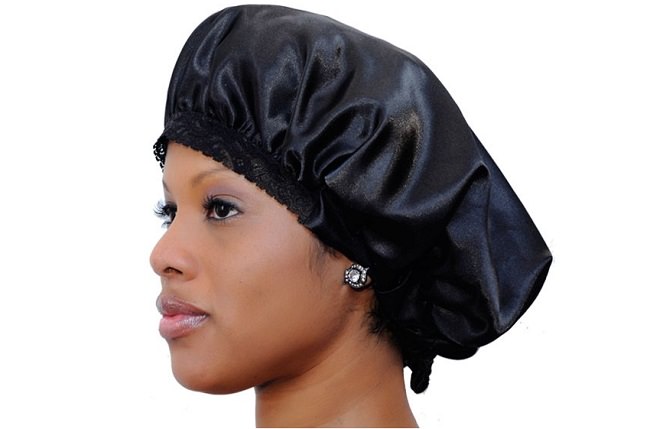
Night time Routine
There is no way to maintain the foundation you have created on wash day if you go to bed with no solid plan on what to do with your hair. You are in luck. Bunning is the easiest way to maintain moisture in your ends and there is genuinely no need for nightly moisturizing and sealing. This is great for those of you who have very busy lives and are not able to spare as much time as you would like on your hair.
The best option for night time, would be to cover your hair with a satin bonnet or cover the perimeter of your head with a scarf. This ensures that moisture is not lost as you sleep and keeps your bun neat until the following day. In the morning, you can quickly make adjustments to the bun, smoothing it with a soft boar bristle brush and controlling your edges if you need to.
After about 3 days it’s advisable to check your ends and see if they are in need of a moisture boost. You can either moisturize and seal then re-bun or you can add some extra moisture by baggying your ends or you can even go with the greenhouse effect technique.
Other Important Tips
Avoid the use of combs and brushes through out the week, as this extra manipulation will be counter productive to what you are trying to accomplish.
Another important tip is to get into the habit of finger detangling even during your wash day. You can gently remove shed hair with your fingers thereby eliminating the use of tools that may lead to breakage during detangling sessions. This will make a huge difference to your length retention!
Additionally try to use hair pins that do not cause stress on your hair, placing them expertly to avoid tension. If you are wearing buns all week, don’t tie them too tight in fact, make sure that they are somewhat slack and leave a bit of of room in your hair tie. Change the position of the buns slightly every few days so that you are not placing stress on just one section of your hair for the entire week.

